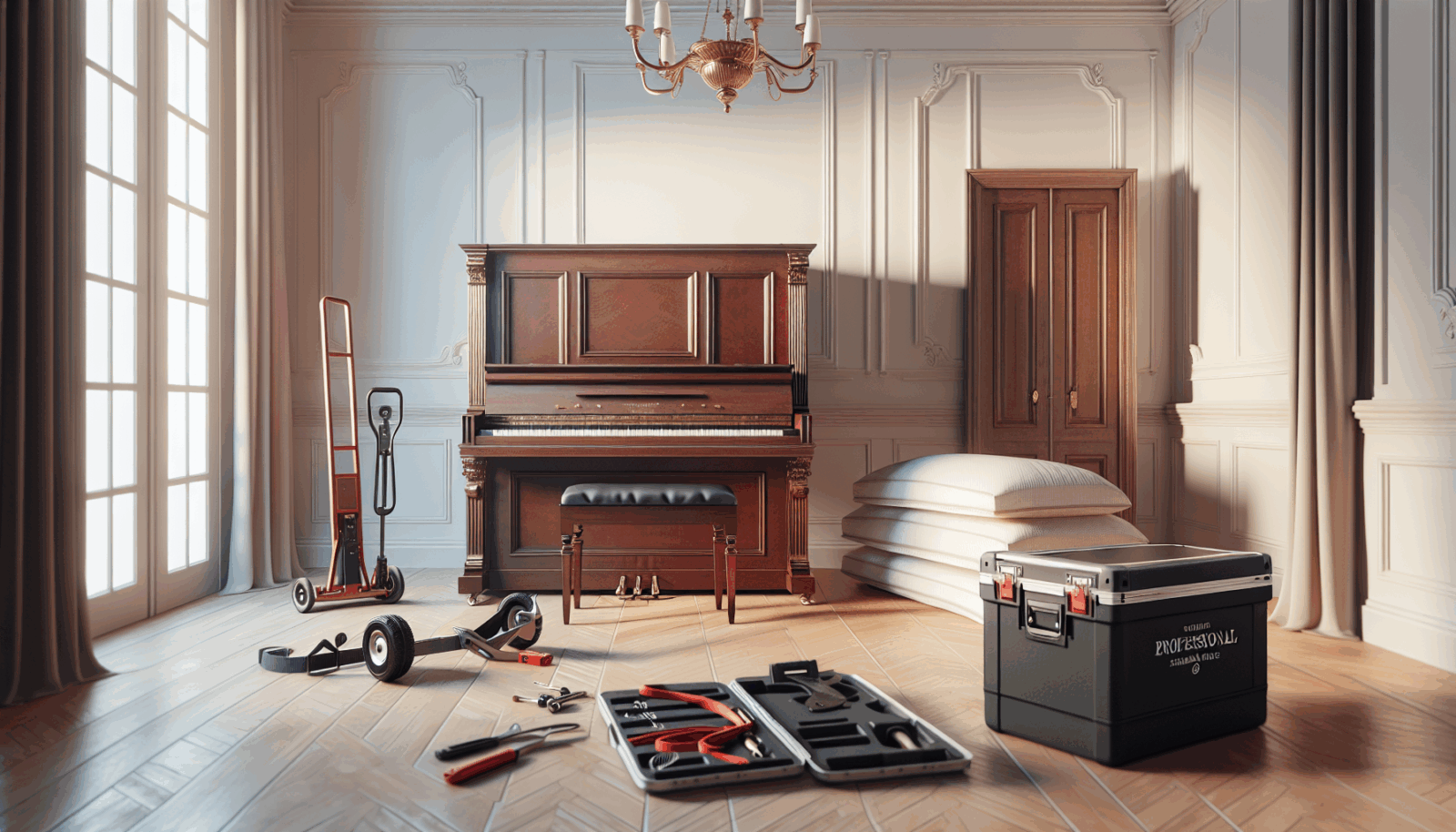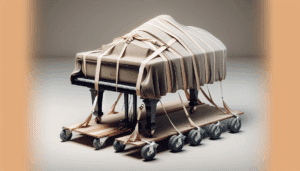Moving an Upright Piano can be a daunting task, especially if you’ve never done it before. At Utah Piano Movers, we understand the intricacies involved in moving such a delicate yet hefty instrument. Whether you’re upgrading to a new home or simply rearranging furniture, moving a piano safely requires expertise and attention. This blog post is your ultimate guide to navigating the challenges of piano relocation. We’ll delve into professional tips and tricks to ensure your piano reaches its destination unscathed.
Contents
Understanding Your Upright Piano
Before diving into the moving process, it’s crucial to appreciate the complexity of an upright piano. These beautiful instruments are not just hefty pieces of furniture but intricate musical items made of thousands of components. Besides the weight, which can range up to 800 pounds, the precision of the tuned strings and keys is paramount. Consequently, a major jolt during transportation can lead to costly repairs or irreparable damage.
Besides being large and heavy, upright pianos are top-heavy. This characteristic makes them even more challenging to maneuver safely. Therefore, understanding your piano’s structure—like where the center of gravity lies—is pivotal for moving it correctly. Despite the complexity, knowing these details will empower you to make informed decisions throughout the moving process.
Gathering Essential Equipment
The right equipment is the cornerstone of successful and safe piano moving. We recommend acquiring several key items before you start the process. First and foremost, use piano dollies designed explicitly for moving such weighty objects. These specialized dollies ensure stability and reduce the risk of tipping over.
Equally important are furniture straps and heavy-duty moving blankets. Furniture straps provide a better grip, making it easier to lift the piano without straining your back. Heavy-duty moving blankets are indispensable, protecting both the exterior finish of the piano and your home’s walls. Invest in these essentials, and you’ll set the stage for a smooth, hassle-free move.
Recruiting a Trusted Crew
You’re not moving a lightweight chair—moving an upright piano requires manpower. Unless you’re a professional, we advise recruiting a crew to assist in the operation. Ideally, enlist individuals who are strong and can follow directions meticulously.
Your crew should consist of at least three to four people who’ve taken the time to familiarize themselves with the task at hand. Discussing a step-by-step game plan beforehand ensures everyone’s on the same page and reduces the likelihood of any missteps. A well-coordinated crew not only ensures safety but also instills confidence as you tackle this challenging task.
Evaluating the Pathway
Examine the pathway you plan to take while moving the piano thoroughly. Obstacles like narrow doorways or tight corners could pose real challenges, so it’s important to take proper precautions. Before lifting a single finger, measure door frames and hallways to ensure ample space for comfortable navigation.
Also, consider the flooring along your route. Carpets and delicate hardwood floors can be tricky to maneuver around. If needed, lay sheets of plywood to serve as a protective layer against heavy wheels or accidental drops. A comprehensive evaluation minimizes last-minute surprises and maximizes efficiency.
Securing the Piano
Once you’ve finalized your plan and gathered a reliable team, the next vital step is securing the piano. This phase is non-negotiable; failing to properly secure your piano can result in avoidable accidents and damage. Heavy-duty moving blankets should be used to wrap the piano completely.
Secure the blankets using straps, ensuring that they are tightly fastened. For extra safety, some professionals employ bubble wrap in addition to blankets. Each precaution acts as a protective cocoon, reducing the risk of scratches or structural damage during transit.
Lifting Techniques
Proper lifting techniques are imperative for ensuring both the safety of the movers and the instrument. When it comes time to lift, use your legs rather than your back. This technique minimizes the risk of injury and provides a more sturdily executed lift.
Each member of your crew should have a spot and job to do—front, back, and sides—allowing for a balanced, coordinated effort. Communicate openly throughout this stage to ensure everyone lifts in unison, safeguarding your upright piano’s journey.
Navigating stairs adds a layer of complexity to moving any heavy object, especially something as awkwardly balanced as a piano. It is crucial to maintain constant communication with your crew, indicating when to stop, lift, or move. Also, consider using ramps if the incline is manageable.
The person responsible for handling the lower end must constantly monitor the weight. Any misstep can lead to catastrophe, so proceed with deliberate, cautious movements. When managed carefully, stairs are merely a challenging step in the journey rather than an insurmountable hurdle.
Transporting the Piano
The transportation phase is pivotal. Utilizing a specialized piano dolly facilitates smoother movement across flat surfaces. Once you reach the vehicle, utilize a heavy-duty ramp to load the piano. Keep the upward-face stable by ensuring it remains tightly secured with straps within the vehicle.
If you’re using a truck, adjust the base to guarantee that the piano stays optimally aligned. Once secured, double-check all straps and covers before departure. Executing these steps diligently ensures the piano remains safe throughout the entire trip.
Post-Move Considerations
Congratulations, you’ve successfully relocated your upright piano! However, the process doesn’t quite stop there. It’s generally recommended to allow the piano to acclimatize to its new environment before getting it tuned. Temperature changes can impact the strings and the wood, resulting in a compromised sound.
Moreover, reassess the piano for any visible damages during the move. Implementing these post-move evaluations makes sure that your piano is ready to offer years of beautiful music in its new home.
Benefits of Hiring Professionals
- Expert Handling: Professionals know exactly how to maneuver around tight spaces and challenging corners, skillfully carrying your piano with years of experience.
- Cut Costs on Repairs: Avoid injuries or damage to your precious instrument, saving on costly repairs or replacements.
- Specialized Equipment: Professionals come equipped with all the necessary tools to ensure a seamless move, reducing the worry and effort on your part.
- Time Efficiency: With trained personnel on the task, the moving process becomes quicker, letting you enjoy your new setup sooner rather than later.
- Peace of Mind: Hiring experts allows you to focus on other moving tasks, confident that your piano is in capable hands.
Thank you for reading our comprehensive guide on moving upright pianos. If you’d like our experts to handle the complexities of your move, please Contact Us at 801-396-7323 or Request a Free Quote.




